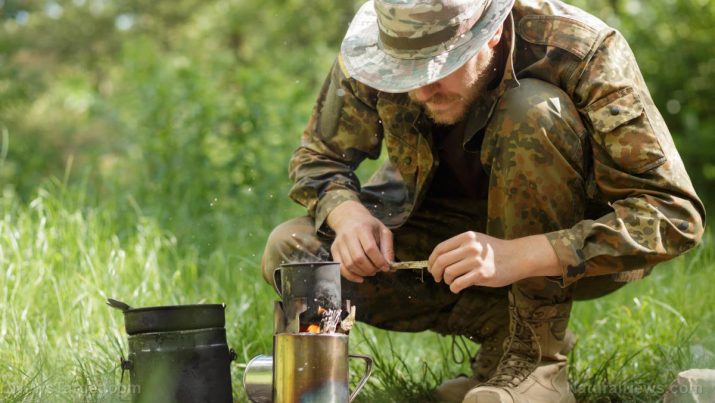Here’s a handy guide to safely foraging for wild edibles
Wednesday, September 25, 2019 by Melissa Smith
http://www.bugout.news/2019-09-25-handy-guide-to-safely-foraging-for-wild-edibles.html

A good guideline when foraging is to never eat anything that you don’t fully recognize: Many plants in the wild that may look edible but are actually poisonous. There are also some telltale signs to help you identify which plants are not safe to eat. (h/t to Survivopedia.com)
One of the most common signs of a poisonous plant is the color red. Most plants that have brightly colored red leaves, buds or berries often have a high toxicity. This may not be always the case, but it’s better to stay cautious.
You can also tell if a plant is poisonous through its smell. If a plant gives off a foul odor, there’s a high chance that it’s not safe to eat. A plant might also be poisonous if you smell an almond-like scent coming from its leaves or the main woody stem or trunk.
Plants with three-leaved formations, such as poison oak and poison ivy, are also unsafe. Skin contact with these plants can cause rashes and blisters and, if ingested, can cause a serious threat to your life. If a plant has a discolored or whitish sap, soapy or bitter taste, thorns or fine hairs and bulbs, beans or pods containing seeds, it could also be poisonous. (Related: Everything you need to know about foraging for food when SHTF.)
However, these are only guidelines. If you encounter an unfamiliar plant and want to determine if it is edible, you can carry out the Universal Edibility Test, which may take at least 24 hours. You will also need a plant to be broken into separate parts and individually testing them over a day. You should also not eat or drink for eight hours. Below is a step-by-step guide in conducting this test.
- Separate the plant – Divide the plant into five parts: buds, flowers, leaves, roots, and stems. Throw away any part that shows signs of insects, worms, or parasites, and find another.
- Contact test – Crush and rub one plant part along your inner arm or wrist and wait for eight hours. During this time, you should not eat anything except water. If you see or feel any adverse reaction on your arm, such as redness, burning, or bumps, then stop. Move onto another plant part to test.
- Cook test – If you can start a fire and have some clean water, then boil the plant part. Hold the plant – boiled or raw – to your lip and wait for three minutes. If you feel a burning sensation or any other adverse reaction, try testing another part. If there is no reaction, move onto the next step.
- Taste test – Put the same plant part on your tongue and wait for 10 to 15 minutes. If you feel any tingling or burning sensation, immediately rinse your mouth with clean water.
- Chew test – Chew the plant part fully, but don’t swallow. If you feel any sign of burning after 10 minutes, quickly rinse your mouth with water.
- Swallow test – After the chew test, you can swallow that part and wait for eight hours, during which you can only drink water. If you start feeling sick, drink plenty of water, enough to induce vomiting.
- Chow test – This is the final test. Take a quarter cup of the same plant part and prepare it as in step 3. Eat it and wait for eight hours, during which you can only consume water. If you feel any adverse reactions like nausea, follow the above steps. if you’re still not feeling well and feel a burning or tingling sensation in your mouth or on your skin or lips, stop immediately. Clean the affected area with water with purified water and start again with another plant part.
If you feel fine after all these tests, you can safely assume this part of the plant is edible. It can be time-consuming, but it can save your life in emergency situations when you have no food. To expand your knowledge on safely foraging for wild food further, find a mentor. Learning from an expert or someone more experienced will give you more confidence in properly identifying wild edibles. Getting a good reference book is a close second to a mentor.
Sources include:
Tagged Under: Tags: food safety, foraging, foraging skills, goodfood, goodmedicine, how to forage in the wild, how-to, preparedness, prepping, superfoods, survival, survivalist, surviving in the wild, wild berries, wild edibles, wild foods, wilderness survival

